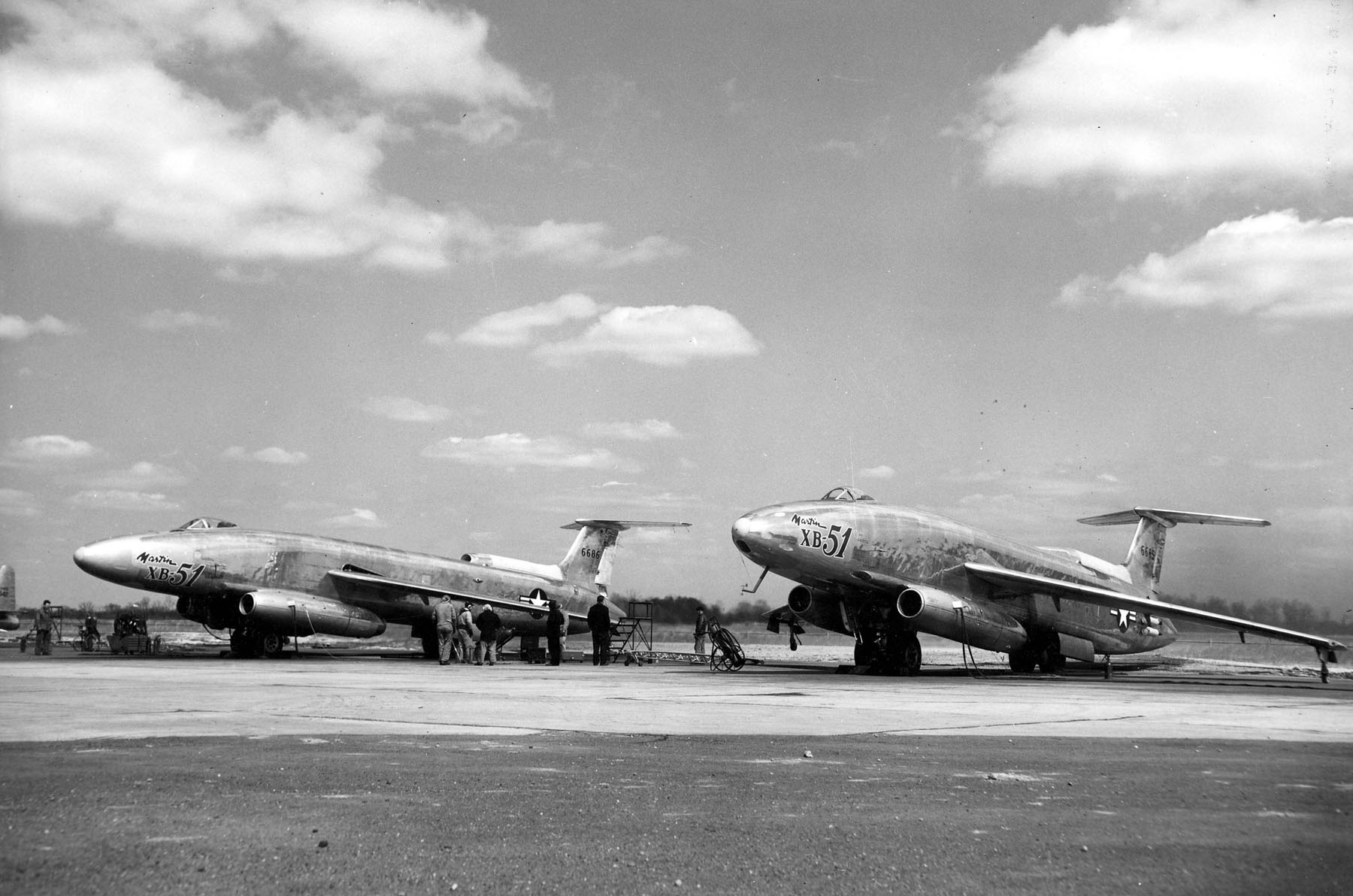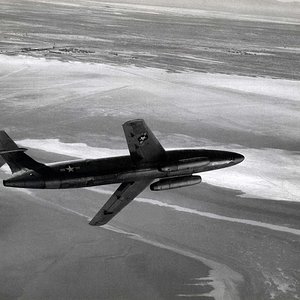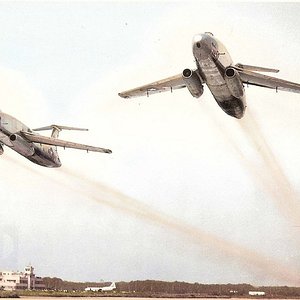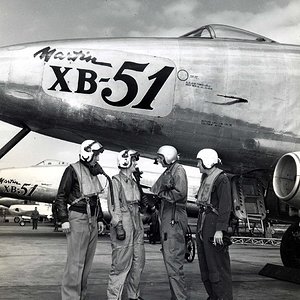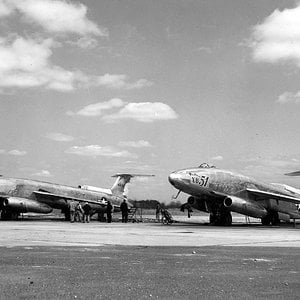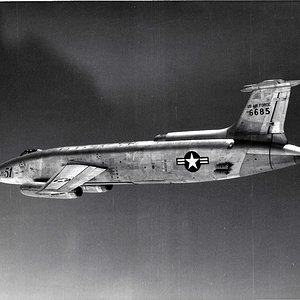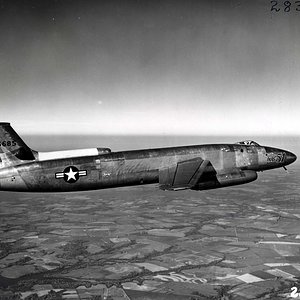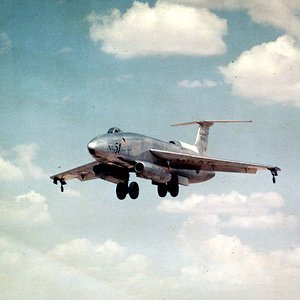Navigation
Install the app
How to install the app on iOS
Follow along with the video below to see how to install our site as a web app on your home screen.
Note: This feature may not be available in some browsers.
More options
You are using an out of date browser. It may not display this or other websites correctly.
You should upgrade or use an alternative browser.
You should upgrade or use an alternative browser.
Martin XB-51
(19 May 1950) The primary mission of this aircraft is low level attack for destruction by bombs and guns of surface military targets in tactical support of ground and/or naval forces.
The primary mission requires only the pilot to operate this aircraft; however, an additional crew member is required for Shoran bombing. Both crew members are located in an air conditioned pressurized compartment forward in the fuselage and are afforded positive bailout-ejection seats.
This aircraft features sweptback surfaces having thermal anti-icing, variable wing incidence for take-off and landing, variable tail incidence for trim and dive recovery, full span single slotted flaps, spoiler aileron lateral control, partial span automatic wing leading edge slats and fuselage dive brakes for glide control.
The main landing gear is of the bicycle type located in the fuselage and lateral stability is provided by wing tip gears.
The power plant installation incorporates water-alcohol thrust augmentation for take-off, a variable area tail pipe, automatic tail pipe temperature control, and continuous fuel tank purging.
Armament consists of pilot bombing facilities A-1-B gun-bomb rocket sight with radar ranging, rotary type bomb bay serving dual role of bomb carrier and bomb bay door with provisions to carry rockets, Shoran bombing system, 20mm strafing armament and passive defense consisting of engine flak protection and armor glass windshield.
Photographic facilities include a forward recording strike camera, a vertical high altitude strike and reconnaissance camera, and an aft recording camera for damage assessment of low altitude bombing and strafing.
Originally designated XA-45 (attack aircraft), the XB-51 made its first flight on Oct. 28, 1949
(19 May 1950) The primary mission of this aircraft is low level attack for destruction by bombs and guns of surface military targets in tactical support of ground and/or naval forces.
The primary mission requires only the pilot to operate this aircraft; however, an additional crew member is required for Shoran bombing. Both crew members are located in an air conditioned pressurized compartment forward in the fuselage and are afforded positive bailout-ejection seats.
This aircraft features sweptback surfaces having thermal anti-icing, variable wing incidence for take-off and landing, variable tail incidence for trim and dive recovery, full span single slotted flaps, spoiler aileron lateral control, partial span automatic wing leading edge slats and fuselage dive brakes for glide control.
The main landing gear is of the bicycle type located in the fuselage and lateral stability is provided by wing tip gears.
The power plant installation incorporates water-alcohol thrust augmentation for take-off, a variable area tail pipe, automatic tail pipe temperature control, and continuous fuel tank purging.
Armament consists of pilot bombing facilities A-1-B gun-bomb rocket sight with radar ranging, rotary type bomb bay serving dual role of bomb carrier and bomb bay door with provisions to carry rockets, Shoran bombing system, 20mm strafing armament and passive defense consisting of engine flak protection and armor glass windshield.
Photographic facilities include a forward recording strike camera, a vertical high altitude strike and reconnaissance camera, and an aft recording camera for damage assessment of low altitude bombing and strafing.
Originally designated XA-45 (attack aircraft), the XB-51 made its first flight on Oct. 28, 1949

